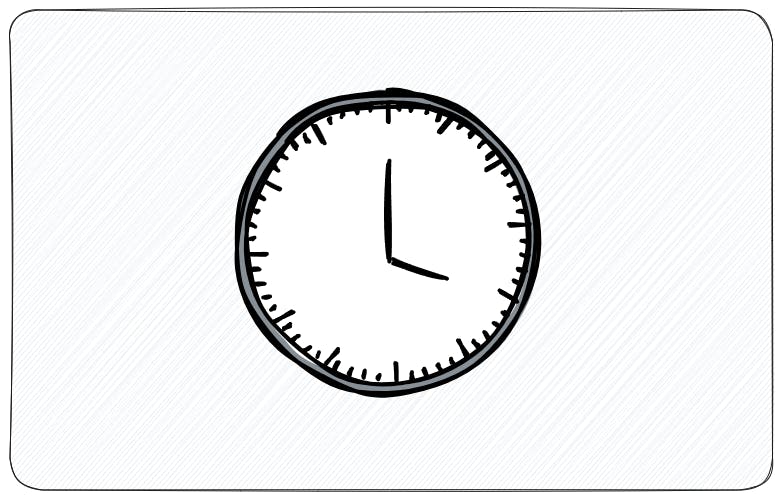6 Fantastic Ways to Make the 𝕏 (Formerly Twitter) Algorithm Work for You
Learn how to use Twitter's algorithm to market and push your content to a broader audience.
I'm a regular Twitter user. I spend much of my time on Twitter than on other social media platforms.
One month ago, I tracked the time spent on every social media app. This was easy because I have a digital well-being app installed on my smartphone.
And guess what!
I was shocked by the findings.
Typically, I spend 2-to-3.5 hours of my time on Twitter every day.
Since my Twitter use is purely casual scrolling, this post is for someone who wants to use Twitter for marketing themselves. For the marketers who want to leverage Twitter to advertise their products and have users interact with their content.
Let's dive in. But first, here's a little trip down memory lane to better understand what we'll discuss today.
How Social Media Content Recommendation Started
Some time ago, before social media became the sensation it is today, Twitter had a relatively straightforward approach to presenting content: it displayed posts in reverse chronological order.
However, as Twitter and other social media platforms gained massive popularity and user bases, the volume of content being generated and shared skyrocketed. This exponential growth posed a significant challenge to maintaining a purely chronological order for content presentation.
In the face of this content explosion, the need for a more sophisticated system of content curation and organization became increasingly evident. This is how social media algorithms were born.
In this guide, we'll cover the Twitter algorithm in more detail, and I'll teach you how to leverage Twitter's algorithm by using tried and tested tips to push your content to a broader audience.
Here's a visual representation to help you understand how Twitter's content recommendation system has evolved over the years.

How the Twitter Algorithm Functions
Like Instagram's algorithm, Twitter's algorithm is all about personalization.
If you've been on Twitter long enough, like me, you'll give it to Twitter for being straightforward on their features. The simplicity of the platform has drawn many users in.
This is a big plus for users.
However, marketers feel different about this.
When Twitter updates its algorithm, most marketers are often left confused. They think the effort they put into their social media strategy goes unnoticed. Fortunately, there are ways to readjust your marketing strategy and conquer the Twitter algorithm.
So, how does the Twitter algorithm work?
Twitter says its algorithm prioritizes engagement; This can be through retweets, conversation, and follower count. Most people struggle with the engagement part.
Also, many people have voiced their dislike for algorithmic timelines. Even with all this, one thing remains clear: you must optimize your tweets. This ensures the algorithm picks them up and sees them by the right audience.
The Twitter algorithm also sorts content based on recency, media quality, and relevance.
I've dug deeper, and below are six tried-and-tested tips to help your posts land a higher engagement.
1. Be Consistent
As a brand, posting consistently increases your Twitter engagement. You need to post several times per day if you want to see results.
But how much posting is too much posting?
You want to balance how you post your content. This is something you'll need to experiment with and try.
I recommend posting five times per day.
According to an infographic from Coschedule, posting at all times of day is highly recommended. This helps you engage with the dimension of your audience.
Additionally, try and retweet other's content. This allows the algorithm to pick your profile.
2. Engage with Your Audience

Twitter's simplicity has increased its user base in recent years. Many users view it as the best social media platform to reach a brand.
When engaging on Twitter, ensure you respond quickly to queries and brand mentions.
As someone with a digital marketing background, I recommend responding to your users within 1 to 2 hours. Users feel prioritized when their queries are answered in the shortest time possible.
3. Timing is Key

Picking the best time to post can be challenging.
First, this depends on your audience.
Fortunately, you can find this out by reviewing your performance analytics.
Sprout Social says Twitter users are most active from 9 a.m. to noon. However, you must understand that what time works for another brand differs from yours.
Conduct a Times feature analysis to check when your audience is most active.
4. Add Hashtags Appropriately

Hashtags are an ideal way to increase engagement on Twitter.
As a brand, check on trending hashtags. However, please don't overdo it. Twitter advises users not to use more than two hashtags per tweet.
Next, consider the @ tag. If you mention someone in your post, remember to include their handle. This way, they can also like and retweet your post.
Using @ tags and hashtags appropriately is a sure way to score points with the Twitter algorithm.
5. Build a Connection

Your followers will likely engage with your posts by building a relationship with them.
Ask your followers questions and feedback, and ask them to retweet. This is an easy hack to start a conversation. This also works both ways. It's akin to "scratch my back, I scratch yours."
Retweet what your followers have to share and respond to their queries. Avoid having a one-way conversation on Twitter. It's too selfish if you ask me.
6. Leverage Twitter Ads

I saved the best for the last.
Most people get discouraged when they can't build a following on Twitter. As a digital marketer, I discourage looking for fast results in marketing.
Sometimes, the results can be disappointing.
However, consider paying for ads on Twitter. Over the years, Twitter ads have been shown to increase brand awareness. Even though success varies from brand to brand, Twitter ads can increase engagement.
In Summary
Social media algorithms have come a long way. And they're going to stay longer than we thought.
From TikTok to Facebook to Twitter, algorithms are the new deal.
The Twitter algorithm is more straightforward to crack than other social media platform algorithms. What's more, the algorithm is there to help you. As a brand, understanding how Twitter's algorithm functions can help you understand why your posts fail or succeed.
Hopefully, the suggestions above will help you use Twitter's algorithm to increase engagement and awareness.

